Take an imaginary journey in a boat down the Milky Way's Great Rift, exploring rich star clouds and dark nebulae along the way.
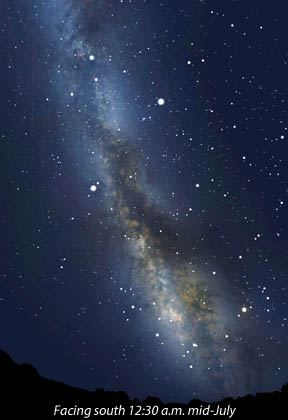
Stellarium
I found myself staring into nothing the other night. This wouldn't surprise my wife. But in truth I was gazing at the dark marrow of the Milky Way galaxy's backbone: massive clouds of starlight-soaking interstellar dust better known as the Great Rift.
It's hard to look at the lack of starlight and see it as anything other than emptiness. That's what confounded astronomers from the 18th century onward, until E. E. Barnard and Max Wolf's careful photographic studies in the early 20th century revealed that William Herschel's "holes in the sky" were caused by great clouds of fine, opaque dust. For a time, even Barnard had a difficult time convincing himself of the fact:
"I did not at first believe in these dark obscuring masses," he noted in a 1919 Astrophysical Journal paper. "The proof was not conclusive. The increase of evidence, however, from my own photographs convinced me later, especially after investigating some of them visually, that many of these markings were not simply due to an actual want of stars but were really obscuring bodies nearer to us than the distant stars." (p. 12)
While dark nebulae of all sizes pock the full circle of the Milky Way band, the Rift is comprised of a series of vast overlapping dust clouds located between our solar system and the Sagittarius Arm, the next spiral arm in toward the galaxy's center. The particles that create it are only as large as those in cigarette smoke (0.1 micrometer) and sprinkled as finely as fairy dust, but together they equal the mass of a million Suns.
Because we gaze along the curved arc of the arm, the width of the Rift varies along its length from about 500-650 light-years in Sagittarius and Aquila to 1,300 light-years in Vulpecula and between 2,000 to 3,200 light-years across Cygnus. Keep this third dimension in mind the next time you're out for a look.
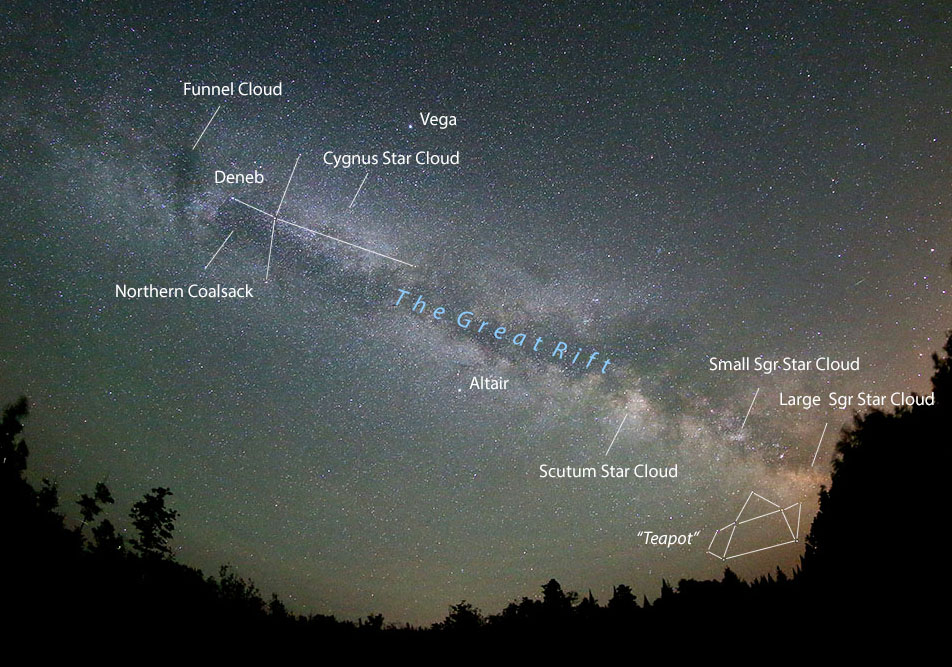
Bob King
You'll see the Great Rift at its best under a dark, moonless sky from July through September. The next viewing window begins about July 23rd and continues through August 7th. On a recent night, I reached my balled fist (equal to about 10°) to the sky and marked off the rift's length at a whopping 70°. It stretches from Centaurus through Sagittarius and on up to the Northern Cross, but for most mid-northern latitude observers it's cut off by the horizon south of Sagittarius. Great clouds of Milky Way stars numbering in the billions define its "shores".
Maybe because I live in the land of 10,000 lakes — and 92,000 miles of rivers and streams — I see the Great Rift as a river like the dark, tannin-stained streams of my home. Let's explore it together by putting in a canoe at its "source" in what Sky & Telescope writer Alan Whitman called the Funnel Cloud Nebula. This dark gash across the Milky Way about 7° long, a few degrees north of Deneb, stands in striking contrast to the surrounding stellar mists. In binoculars, the widest part of the funnel's neck appears inky black.
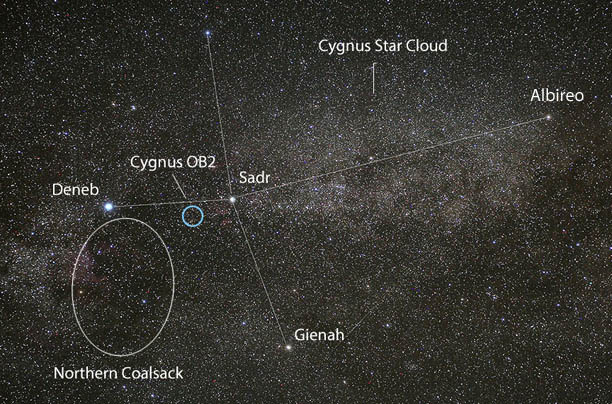
Bob King
Paddling east and south we exit the narrow end of the Funnel and quickly find ourselves in a deep, round bay called the Northern Coalsack. To our left, 1st-magnitude Deneb shines like a beacon along its western shore. The 5° × 6° vacant space, bounded by Deneb, Sadr, and Gienah, is the northern counterpart of the Coalsack in the Southern Cross. Not far from its southwestern edge, invisible to the eye, lies the Cygnus OB2 star cluster, one of the richest in the sky but completely obscured by the Great Rift. Would that we could sweep the dust away like an umpire brushing home plate to see what we're missing.
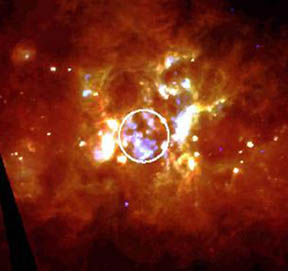
NASA / JPL-Caltech
Angling the craft to the south-southwest we next encounter a magnificent island crowded with stars — the Cygnus Star Cloud. This fat ova, spanning 17° from the center of the cross to Albireo, glows with the granulated light of scores of stars at and near the limit of visibility. Seen from a truly dark sky, it absolutely scintillates. I consider it the largest and most visually rewarding star cloud visible with the naked eye from the Northern Hemisphere.
Every summer, the Cygnus Star Cloud remains my favorite place to make low power sweeps with the telescope as well. After a long night of faint-nebula-hunting, there are few better ways to relax the mind and titillate the eye than strolling through this candy store of starry sweets.
The river narrows between Albireo and Sagitta and appears less contrasty. Perhaps the rift is soupier here than further north. Unlike the sparkly Cygnus Star Cloud, I see the surrounding Milky Way band in 10×50 binoculars as a textured but unresolved haze.
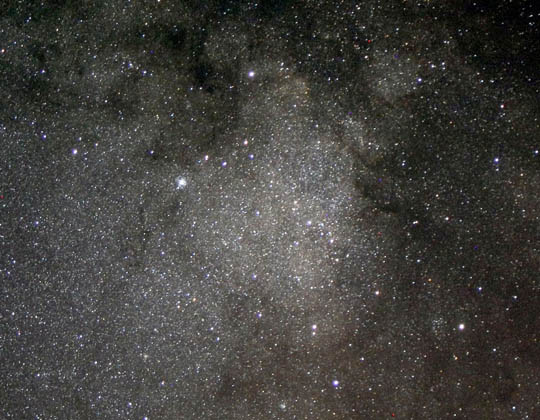
Bob King
After drifting through the narrows of Sagitta, taking care to watch for hidden shoals, we pass by a several-degree-long brighter patch of Milky Way with no official designation, a bit northwest of Altair in Aquila. Here the river begins to widen as we gaze off to our right at the magnificent Scutum Star Cloud, a bright pom-pom of mostly unresolved starlight about 5° in diameter. If you look closely however, and use averted vision, you'll see faint stars mingled within the large, misty glow.
The familiar Wild Duck Cluster (M11) nestles against the cloud's northeastern edge 6,000 light-years away. While spectacular in a telescope, you can also see it as compact cotton ball without optical aid using averted vision. Binoculars further enrich the view and show the cluster with ease.
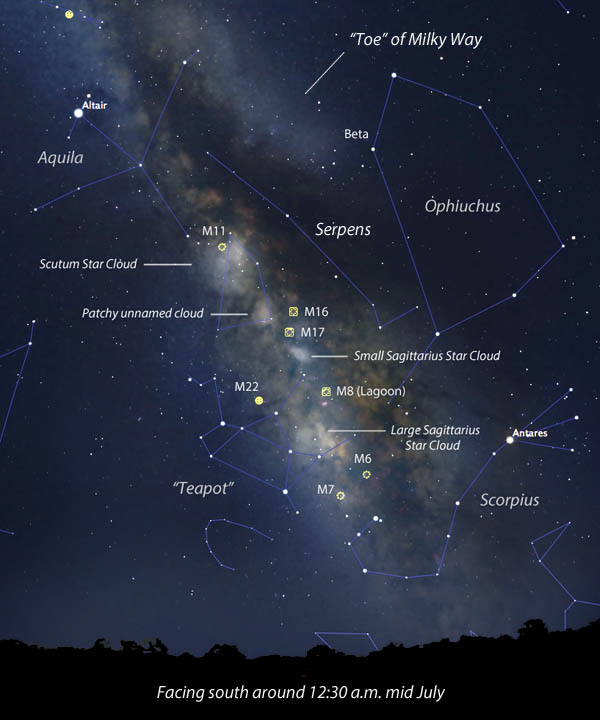
Map: Bob King; Source: Stellarium
At least at my mid-northern latitude, the Scutum Star Cloud is the brightest, densest patch of Milky Way in the entire sky, visible even in first quarter moonlight and moderate light pollution. At the Cloud, the rift balloons into a bay so large, the western half of the Milky Way appears to end abruptly in toe-shaped swoosh in northern Ophiuchus near the star Beta.
Seen from our canoe we're left with only the galaxy's eastern shore to navigate by as we paddle ever southward past another low island, which looks like another star cloud but remains unnamed. With averted vision I have no problem seeing the Eagle Nebula (M16) and Swan Nebula (M17) several degrees to the west of this puff.
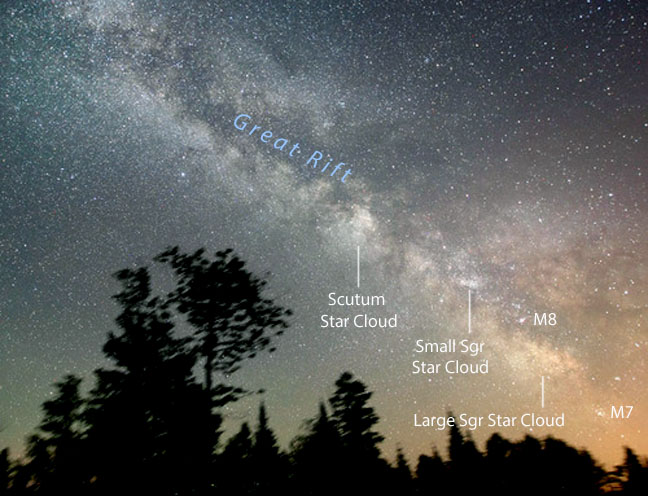
Bob King
At this point, your arms may be tired from paddling, so we'll stop for a midnight snack and let the canoe drift with the current past the Small Sagittarius Star Cloud. Bright with a crisp border and granulated with faint stars when viewed with the naked eye, the cloud is anything but small. Measuring about 1½° across, its real diameter is 600 light-years, and it resides within the Sagittarius spiral arm an incredible 10,000 light-years from Earth. Binoculars and telescopes break into a revelry of stars blotted here and there by several small dark nebulae.
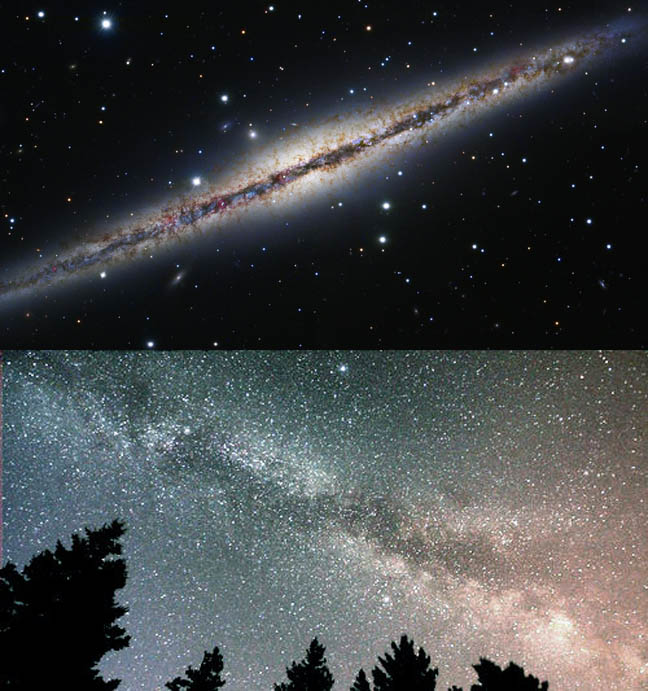
Top: Subaru NAOJ / NASA / ESA / West Mt. Observatory / Processing: Robert Gendler. Bottom: Bob King
Our river journey ends for now at the big puff of "steam" that appears to issue from the top of the Sagittarius "Teapot" asterism called the Large Sagittarius Star Cloud. The cloud looks bright, puffy and smooth — I can't resolve it into stars with the unaided eye. But in a telescope it's chock full of them in addition to a fine assortment of star clusters and dark nebulae. The other half of the Milky Way reappears here as well, but it's fainter and more diffuse partly because of low altitude. Skywatchers at more southerly latitudes have a better view by far of this deep southern section.
Not only is the Great Rift rife with the dust blown from aging stars and supernovae explosions, but that very dust also is being reinvented as the next generation of stars from within dense pockets and folds that litter the length of the chasm. Imagine: instead of emptiness we stare into possibility.
 6
6








Comments
Anthony Barreiro
July 13, 2016 at 6:35 pm
Awesome. It is a real treat to be under a dark enough sky to be able to see the milky way in such detail.
I believe the dark nebula you and Alan Whitman refer to as the Funnel Cloud was catalogued as Le Gentil 3. http://www.astropix.com/wp/2010/10/20/le-gentil-3/
You must be logged in to post a comment.
Bob KingPost Author
July 13, 2016 at 8:29 pm
Anthony, I hope you have the opportunity for a nice dark sky to see these wonderful features. Thanks for the La Gentil reference!
You must be logged in to post a comment.
Anthony Barreiro
July 14, 2016 at 12:52 pm
I get out under a truly dark sky at least a couple of times a year, and under a moderately dark sky once or twice a month. I wish it was more, but even that much feeds my soul. Last summer when I was offering a skywatching weekend at Wilbur Hot Springs I went outside to prepare as the sky was getting dark and I was surprised and worried that clouds were forming. It was the Cygnus star cloud!
You must be logged in to post a comment.
Bob KingPost Author
July 15, 2016 at 1:27 am
Anthony,
Love it! I've had a similar experience under exceptional skies and also been with less experienced observers who always thought "those were clouds".
You must be logged in to post a comment.
Howard Ritter
July 16, 2016 at 10:27 am
Thank you, Bob, for a comprehensive and compelling guide to the Northern Milky Way! It's hard to imagine anyone reading this and not grabbing their binoculars and clearing their schedule for the next Moonless night. I'm a fan of binocular astronomy and of the Central Bulge – the "Three S's", Scorpius, Sagittarius, Scutum. Cruising through the star clouds and the M's in this area in my 100-mm binocular starship is just about my favorite thing to do. I even wrote an essay for the Focal Point feature in the February 2015 Sky and Telescope about doing this from the awesome (not a term I use casually) darkness of Big Bend National Park. Now, if only we could get a break in the unseasonable cloudiness here in NC...
You must be logged in to post a comment.
Bob KingPost Author
July 17, 2016 at 2:04 pm
Hi Howard,
Many thanks for your comments, and I sure you get clear skies during the upcoming lunar dark period. Even in Duluth the southern Milky Way is lovely in binoculars. I can only imagine the view in a 100mm pair!
You must be logged in to post a comment.
You must be logged in to post a comment.